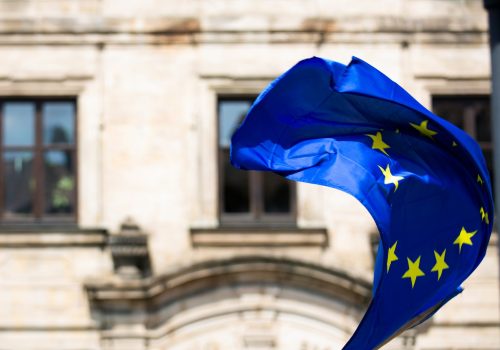Counting the costs of technonationalism and the balkanization of cyberspace
This page is only an excerpt of a technology foresight report in order to give readers an introduction to the topic and the opportunity to browse through alternative futures. To access all content, please download a digital copy of the paper or return to the main report page.
Two trends come together: digital sovereignty and fighting disinformation. At one time, Western democracies were committed to an open, free Internet with minimal government involvement. That was, however, before the social media channels became the arena for hatred and disinformation. The Europeans got angry when the big US tech giants did such a poor job policing it. In the United States, Republican politicians accused the tech companies of being biased, banning Trump and other conservatives from Twitter as well as other outlets. At the same time, many moderate politicians, like their European counterparts, thought Facebook, Google, and others could do a better job eliminating hate speech. Worldwide, “Internet sovereignty” was catching on. Already in 2019, thirty-three governments shut down the Internet 213 times, up from the previous year. Whereas “Internet sovereignty” was once associated just with China’s “Great Firewall” of censorship, it became popular with other governments, such as India, Russia, Turkey, and Indonesia, too.
While there were varying degrees of government control over the Internet, the trend line became clearer and darker as democracies moved in the direction of authoritarianism, believing that liberal markets were no model for the digital age. While they still decried China’s growing repression and use of social media to target dissidents, the Internet was seen as a threat to democracy, too, rather than a bulwark—the way it was originally portrayed. For Western elites, the unregulated digital space was a conveyor belt of disinformation, making it virtually impossible to govern. The French post-pandemic presidential election, for instance, was marred by widespread disinformation campaigns both by domestic as well as international foes of President Macron. The newly elected president blamed his near-defeat (it was only on the recount that he emerged victorious) on the disinformation coming from right-wing extremists. Anti-immigrant groups throughout Europe were active in trying to defeat him and other liberal forces.
The right-wing, Trump-supported attack on the Capitol on January 6, 2021, had been pivotal in persuading lawmakers that there had to be more oversight of social media. For many progressives in the Democratic Party, the tech companies were too big and monopolistic anyway and should be broken up. It was only a half step for them to call for more regulation of the companies to prevent the spread of domestic radicalism. The United States also instituted curbs on Chinese technology, including their apps. The government in Beijing moved to tightly regulate China’s tech companies’ operations abroad, convincing US regulators that those companies could not be trusted with data gathered in the United States. Over time, US tech companies saw their market share dwindle in China and Asia, as more and more US government regulatory curbs encouraged Chinese tech companies to leave the US market, too.
While it started as a well-meaning effort to prevent disinformation and propagation of violent extremism, the increasing regulation began to fracture the Internet into at least three largely separate regimes, reinforcing the forces of technonationalism and protectionism. Because of security fears, the United States and China became highly protected tech markets; Europe has less of a choice, not having tech champions of its own, so both US and Chinese tech companies operated there, but under EU regulatory control. The economic costs of such a fractionalizing of the Internet were staggering. Before all the new regulation, a report by Japan’s Ministry of Economy, Trade, and Industry (METI) had estimated that at least half of all trade in services is ICT-enabled (between 50 and 56 percent); digital commerce would account for 25 percent of global trade by 2025; and that this percentage would likely accelerate by an order of magnitude over the coming decade.
Efforts to negotiate globally agreed standards governing the use of software codes, data sharing, and/or commercialization of private content and storage of data, as well as minimally accepted standards on privacy—vital for the continuing flow of data—broke down or became too complex in view of the proliferation of national requirements. Digital commerce depends on open commercial, scientific, and academic data flows. Without such flows, joint research efforts also ceased to exist. Increasingly, scientists were only working with counterparts in their own country, not those outside. In particular, the number of Chinese students and researchers in the United States began to dwindle significantly.
The medical and other supply chain shocks from COVID-19, combined with the growing US distrust of China, lent support to the increasing protectionism and breakdown in flows of information and people. In addition, the United States sought to export its standards. Even before the recent regulatory-driven breakup, the American decision-makers had tried to mobilize support for anti-China “clean networks” banning Huawei infrastructure. It wasn’t always successful, however. China offered too many economic enticements for countries even in the United States’ own backyard—Latin America— for all countries in the region to fall in line with Washington’s dictates.
Europeans decide to fight back
Europeans began to worry about their own ability to trade—not just with China but other countries in China’s orbit—and stayed out of the US clean networks program themselves, even though they followed many of the guidelines for their domestic systems due to worries, for example, about the security of data running over Huawei-built infrastructure. Brussels therefore began efforts to counterbalance the fractionalizing of cyberspace, calling on Washington and Beijing to support an international effort to map the future of the world’s climate, using the latest breakthroughs in quantum computing. Taking a leaf out of its own history, EU leaders thought cooperation on climate—a pressing interest for all, like the establishment of the European Coal and Steel Community after WWII—could decrease the centrifugal dynamics of technonationalism.
At first, Washington was wary, but when it saw Brussels sign an agreement with Beijing for a joint research effort, it wanted in. The EU said there would be no proprietary information. The detailed output—a mapping of likely effects of climate change over the next hundred years—would be a free good for countries participating in the project. Such data would be the basis for policy decided by the next UN Climate Conference, which the Europeans were scheduled to host. Any country not participating would be at a disadvantage. The fruits of an international brain trust using the latest quantum computing could demonstrate how cooperation was much more powerful than competition and conflict, curbing for a time at least the growing US-China hostility. Without more international cooperation on climate change, decision makers risked incalculable harm to everyone’s future. Were Americans really ready to balkanize the Internet if it meant undermining prospects for global innovation that could help save the planet? Moreover, EU leaders were confident that young people everywhere would side with them, putting pressure on Washington and Beijing to limit their competition and explore avenues for an era of great power cooperation.
This page is only an excerpt of a technology foresight report in order to give readers an introduction to the topic and the opportunity to browse through alternative futures. To access all content, please download a digital copy of the paper or return to the main report page.



